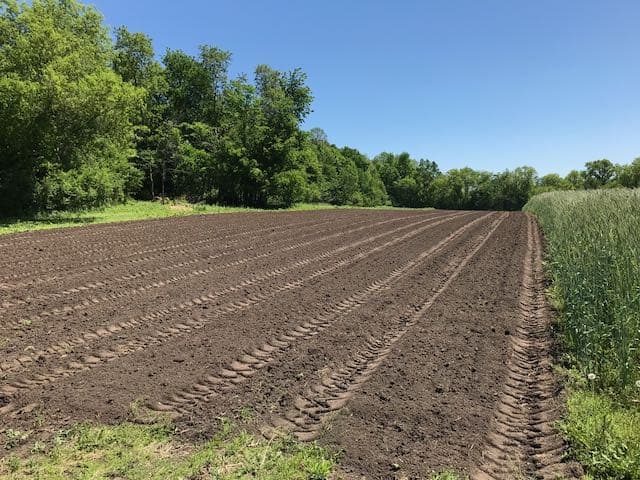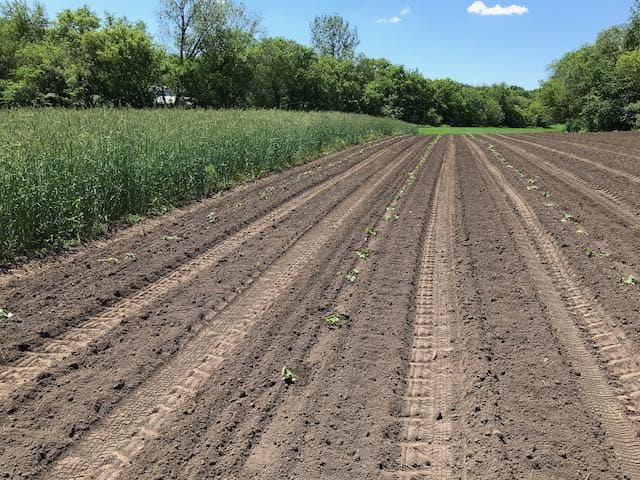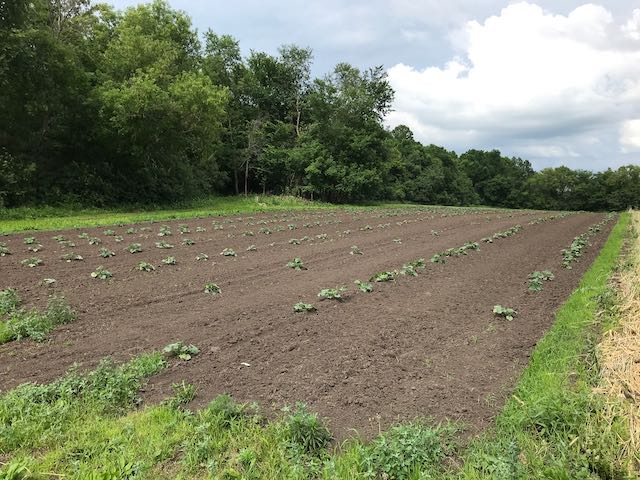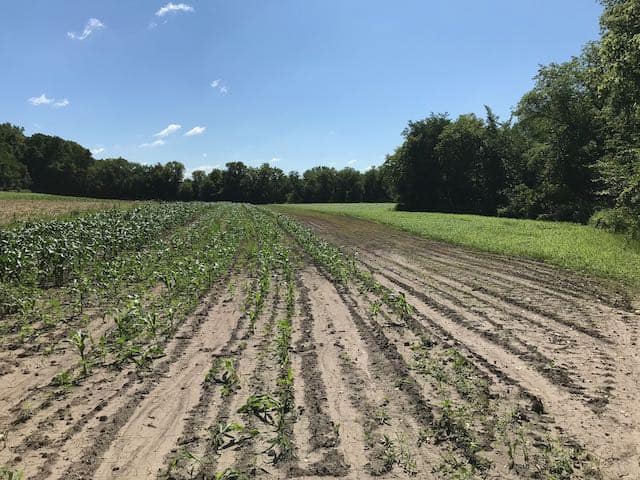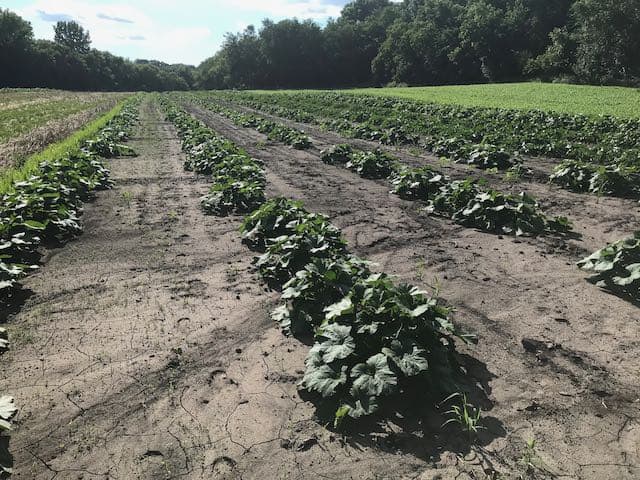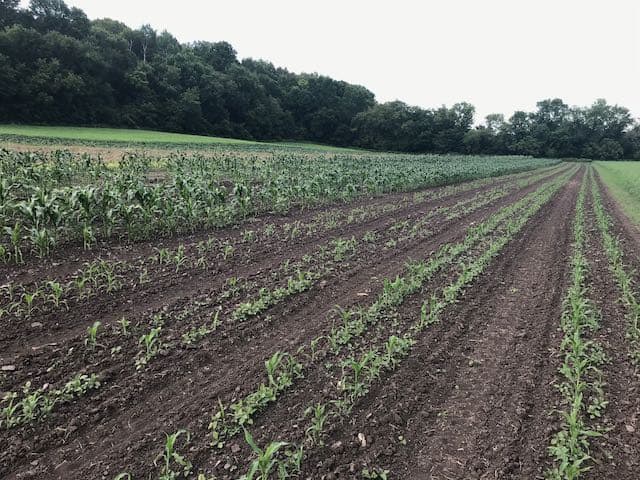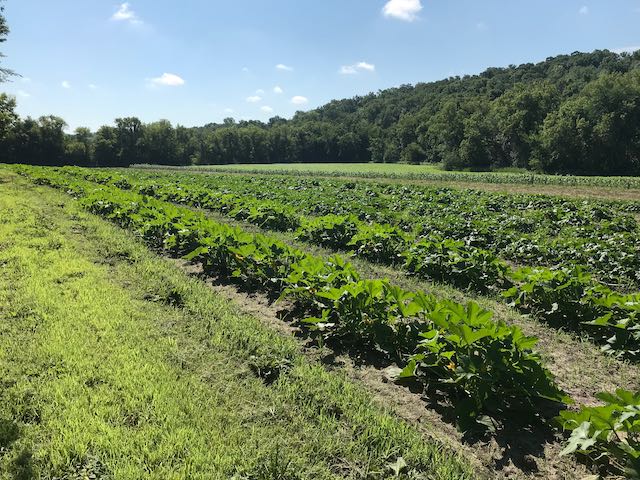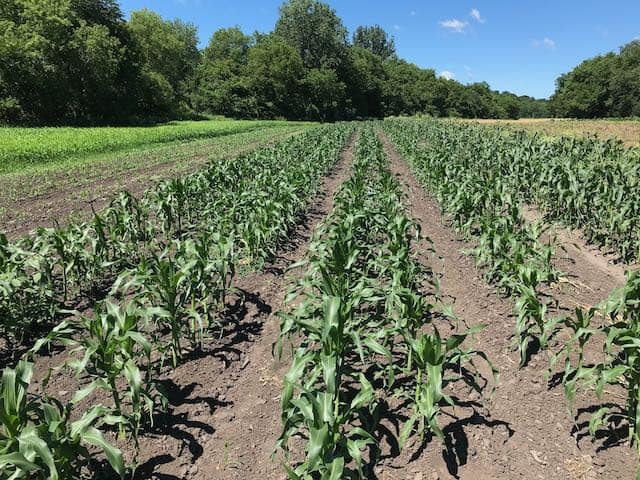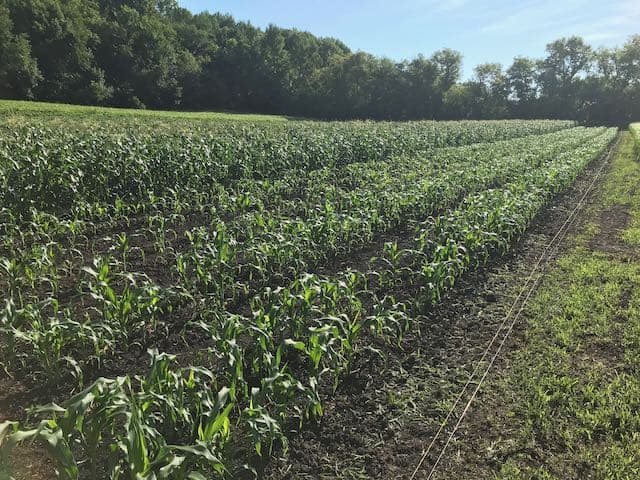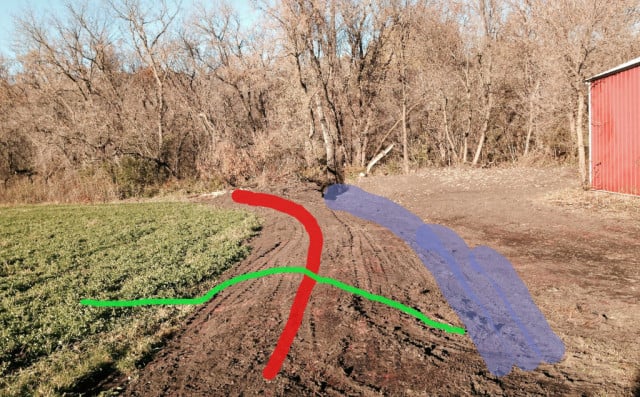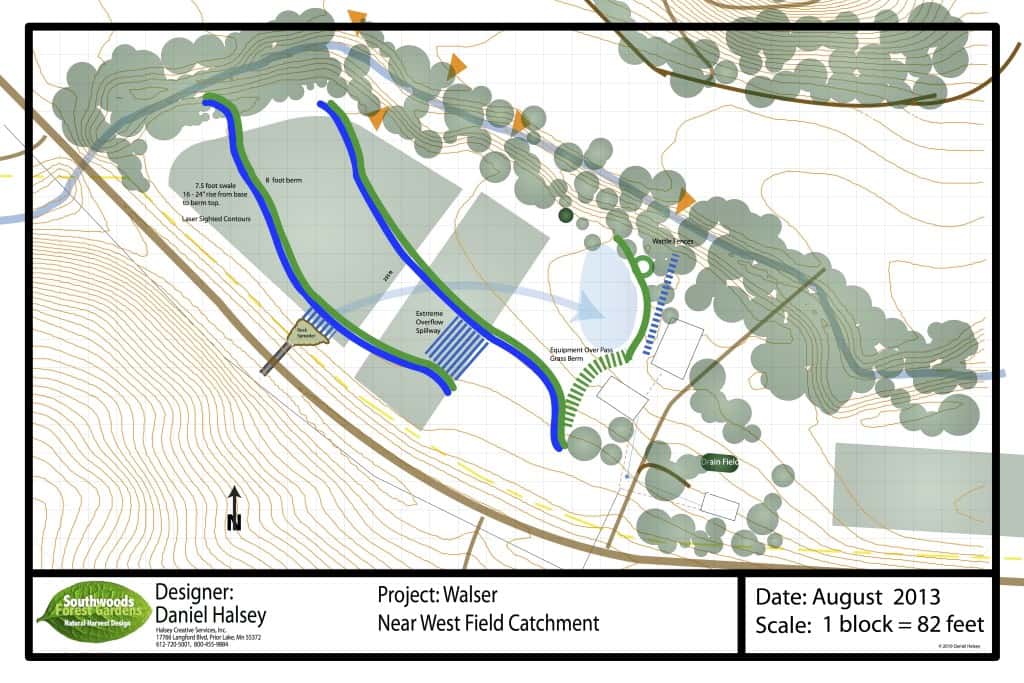Farming
As spring 2020 approached, the outbreak of Covid-19 was on everyone’s mind. Thinking ahead to this year’s farm season and the likelihood of the pandemic affecting food supplies, we decided to dedicate a portion of the farm’s acreage to growing food for distribution by foodhselves. Second Harvest Heartland in the Twin Cities and Channel One Regional Food Bank in Rochester agreed to help with distribution and Dana Jokela of Sogn Valley Farm agreed to help with machine work and planning. So I bought organic corn seed and squash plants, we worked up the field and planted in May and June. Now The Land Stewardship Project has agreed to act as fiscal agent for the project so anyone who’d like to donate funds to pay Sogn Valley Farm for their labor and use of their machinery can do so tax-deductibly (is that a word?).
If you’d like to join the effort by donating, you visit this GoFundMe page. Donations are tax-deductible.
Soon it will be time to gather volunteers to harvest corn – but more about that soon.
Most are doing well, a few have failed. Also in the mix are chives and daffodils, but exact locations not noted. At the moment it looks like another 19 trees and 13 shrubs to complete the berm next spring . . .
Here’s the current listing, east to west. Shrubs in italics.
[Planted 2015]
Rhubarb
Apple: Roxbury Russet
Elderberry
Apple: Cox’s Pippin
Elderberry
Cherry: Gisella – Black Gold
Elderberry
Cherry: Gisella – Black Gold
Elderberry
Pear: Aurora
Elderberry
Pear: Potomac
Elderberry
Pear: Harrow Sweet
Elderberry
[Planted 2014]
Apple: Snow Sweet
Currant
Apple: Honeycrisp
Currant
Apple: Haralson(?)
Elderberry
Plum: American
Currant
Plum: Mount Royal
Elderberry
Plum: Pipestone
Serviceberry (bush)
Currant
[Needed: Tree: Serviceberry]
Currant
Serviceberry (bush)
Cherry: Evans Bali
Currant
Cherry: Northstar
[needed: shrub]
Cherry: Mesabi
Elderberry
[Planted 2015]
Apple: Enterprise
Elderberry
[failed: Apple: Cox’s Pippin]
Elderberry
Apple: Roxbury Russet
[shrub]
[failed: Pear: Aurora]
[shrub]
Pear: Potomac
Elderberry
Pear: Harrow Sweet
Elderberry
Apple: Enterprise
Elderberry
Apple: Goldrush
[shrub]
Apple: Pristine
Elderberry
Apple: Goldrush
[shrub]
Last Stretch:
[tree]
[shrub]
[tree]
[shrub]
[tree]
[shrub]
[tree]
Currant
[tree]
Elderberry
[tree]
[shrub]
[tree]
Elderberry
[tree]
[shrub]
[tree]
[shrub]
[tree]
Elderberry
[tree]
Raspberry
[tree]
Raspberry
[tree]
Raspberry
[tree]
[shrub]
[tree]
[shrub]
[tree]
[shrub]
[tree]
Gorgeous! A terrific crew of volunteers enjoyed fascinating presentations by Dan Halsey bookending a day of practical implementation of Keyline Design. Our near west field has new berms and swales and a rock (those were big rocks!) outflow by the culvert to slow and spread the flow of water during major rain or runoff events.
Here is a view of the field with the swales highlighted and the rock installation circled. I wish I had an arial photo to show the actual shape and how the berm/swale combinations follow the contour. Now we have to wait for a big rain or the spring runoff to see how it all works!
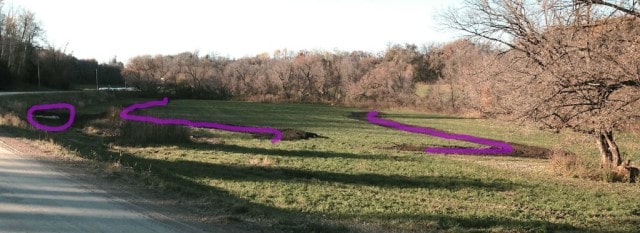
And here is the ‘Defensive Berm’ near the pole shed. The berm is highlighed with red, it stands about 12-18″ taller than the field – the exaggerated countour of the berm is shown in green. The blue marks a new and appropriatedly sloped channel for any water that does make it over the berm or into the area. It sends the water away from the viewer and into our intermittent creek.
And here’s a gallery of photos of the day.
A humongous “Thank You!” to everyone who participated. We are so lucky to have you all in our circle of friends!
A while ago I challenged folks to create solutions to the erosion and water management issues on the field just west of the barns. This Saturday we’ll begin to implement techniques we hope will address those challenges. Dan Halsey of Southwoods Forest Garden created this plan. With the help of some heavey equipment and a number of friends, we’ll be creating the rock-lined catch basin at the culvert outflow and building two swale/berm combinations and a final barrier berm.
If you want to come and join us, Dan will be giving an explanatory talk at 9:00 (with coffee and donuts, of course) then we’ll head out into the field and use a laser level and other tools to flag the field for the machines, then finish off the berms/swales with seed. Lunch will be provided and a potluck dinner and bonfire will follow. Should be a fine day to get up close and personal with keyline design.
Hope you can make it.
Reading "Credit Skills for Lending to the Agricultural Sector" – a report prepared to help Community Development Financial Institutions (CDFIs) understand how to make loans to farm businesses – helped me see how bankers view farmers. Since most farmers need bankers, this prespective is important. And I'm starting to think it's way out of whack.
Briefly, the report argues that to evaluate a farm business as a potential borrower a lender should focus on the things lenders normally consider: the "Five Cs": Character, Capacity, Capital, Collateral, and Conditions. From a lender's standpoint this is typically square one. As the report goes on to flesh out each of these criteria, it implies a set of values and behaviors that a lender should require of a farmer. These include cash flow analysis (broken down by "enterprise" such as poultry, corn, CSA or cheesemaking) and lifestyle expectations (the report casually mentions that 'Farmers generally live a very modest lifestyle, which appears to be well below the poverty line, and they usually have little or no cash fall-back position', an indictment of the place of food and farming in our economy IMHO, but that's an aside). Also required are 'Business Management Skills' and a whole range of skills related to marketing. This goes on in detail for pages.
But I wonder, are these requirements realistic? Reasonable? Appropriate?
A few years back I had a wonderul conversation with Lenny Russo of Heartland Restaurant. He lamented that so many farmers came to him asking what he wanted them to grow. In his mind that was backwards. Lenny wanted farmers to come to him with whatever they grew – but only because no matter the product it was was better than anyone else's. He didn't want to specify what a farmer should grow, he wanted the farmer to use her skill to figure out the best crop for her soil, climate, crop rotation etc. in order to produce a superlative product. Think about what's required to do that. Lenny didn't want good marketing, he wanted good veggies. To grow the best eggplant takes a lot more than a spreadsheet of inputs, outputs and profits, it requires deep understanding and skills that aren't mentioned anywhere in the CDFI report. Great farming that produces the very best products in harmony with the earth requires a vast skill set that bankers don't acknowledge – or possibly even see.
As I read that report, I couldn't help but think that the time and energy required of a farmer to satisfy these loan critera would pretty much exclude any time for actually farming. It's as if the bankers (who are, after all, the high priests of contemporary Euro-American society) and, by default, the rest of us put the cart before the horse: get your numbers right and do all this manangement and accounting stuff then maybe you can do some farming!
I've only been at this a short time, but I'm certain of this: a farmer's knowledge of crops, soil, water, weather, animal husbandry, forestry, conservation, biology and so on is overwhelmingly complex and valuable. And I'd rather have a farmer thinking about how to best sustain the land and produce healthy food than devote hours and hours to a marketing plan.
But that doesn't seem to be how the bankers see it.
What name can I give to the vision I have of a farm enterprise that is ecologically resilient and economically viable? I’ve been using a string of adjectives to describe the farm(s) I’d like to finance: small-scale, sustainable, diversified, etc. Perhaps I’m overly romantic, but the notion of “family farm” nearly hits the mark – but not quite. This is partly because of land consolidation into industrial farms which may be owned by a ‘farmer’ who tends the enterprise from a computer screen with a keen eye on crop insurance and federal subsidies and where the cash flows are well beyond kitchen table accounting.
On the other side of the coin are the vast majority (numerically, though not in acreage) of farms for many of which the farm income must be supplemented by one or more off-farm jobs. According the the USDA’s Economic Research Service, though 88% of US farms (by number) are considered small (sales of $250,000 per year or less), the remaining 12% of farms produce 84% of agricultural output. They conclude that, “For the most part, large-scale farms are more viable businesses than small family farms” (emphasis in original. Note that the significance of government price supports, crop insurance and the like which disproportionately benefit large farms are not mentioned).
Farming today, at least as reported by the USDA, is concentrated at two ends of a spectrum and what is sometimes called “Agriculture of the Middle” is today relatively rare. Still, I’d like to support efforts towards the idealized “Sweet Spot” I wrote about a while back: farms that can support a family, steward the land and provide safe, healthy food – without relying on off-farm work for income (or health-insurance coverage). Is a family scale farm even possible today? I know there is tremendous creative energy from the National Young Farmers Coalition, the Greenhorns and others. I think they’re going to figure this out.
And I’d like to help.
- « Previous
- 1
- …
- 3
- 4
- 5

